Did you know that over 60% of adults feel dissatisfied with their hair health ? If you’re one of them, it’s time for a change. With the right hair care tips and a tailored care routine, you can awaken confidence, repair damage, and get the radiant, healthy hair you’ve always dreamed of. Let’s reveal the keys to truly transformative hair care, so you can start seeing results—today.

Did You Know? Over 60% of Adults Are Dissatisfied with Their Hair Health—Change Yours with Proven Hair Care Tips
Many people believe that healthy hair is out of reach due to genetics or luck. But, in reality, effective hair care tips and a dedicated care routine are the most influential factors in achieving the hair you want. Lifestyle choices, daily habits, and smart product selection can all make the difference.
Whether you’re battling split ends, hair loss, dull texture, or chronic frizz, there are actionable steps you can take. With science-backed hair care strategies—like using a heat protectant when styling, understanding your hair type, and knowing how often to wash your hair—you’ll be able to unlock your hair’s healthiest, shiniest version. Let’s explore these game-changing tips together.
Overview: What You’ll Gain from Mastering Hair Care Tips for Healthy Hair
- Discover the key principles of effective hair care tips
- Identify the most common mistakes that hinder healthy hair
- Learn how to personalize your care routine for your unique hair type
- Explore product recommendations for optimal hair health
- Find expert-backed solutions for hair loss , split ends , and other common concerns
Why Hair Care Tips Matter: The Science of Hair Health and Confidence
It’s not just about how your hair looks—it’s about how you feel. Robust scientific research links hair health to overall well-being and self-confidence, showing that a vibrant mane can have a direct impact on happiness, sociability, and self-image. Your hair’s structure—composed of the cuticle (outer layer), cortex (middle layer), and sometimes the medulla (innermost core)—is affected daily by sun, styling, and environmental stressors.
Effective hair care tips are rooted in understanding how these factors affect your hair shaft, follicles, and scalp. By learning to nurture thy hair, you can protect natural oils and reduce the risk of hair damage, dryness, and breakage. Consistent hair care builds resilience and vitality for every hair type—straight, wavy, curly, or coily—and is the cornerstone to lasting hair health.
“Good hair is the crown you never take off—proper hair care tips are your path to ruling with confidence.”

Understanding Your Hair Type: The Foundation of Personalized Hair Care Tips
Personalization is key. Not all hair responds the same to care products or techniques. Identifying your hair type is the essential first step toward an effective hair care routine . This foundation will help you choose the best shampoo, conditioner, and styling products, and informs everything from how often you should wash your hair, to how much hydration and protein your strands need.
Some people with curly hair require more moisturizing care products and less frequent washes, while those with fine, straight hair may benefit from lightweight conditioners and volumizing formulas. Recognizing the unique needs of thy hair prevents common issues like scalp buildup, split ends, and excess oiliness.
Identifying Your Hair Type: Straight, Wavy, Curly, and Coily
The four broad hair types are: straight, wavy, curly, and coily. Each type varies in pattern, texture, oil distribution, and susceptibility to frizz or dryness. Straight hair has a smooth, sleek surface but can become oily quickly. Wavy hair often strikes a balance between volume and smoothness. Curly hair enjoys natural volume but can be prone to dryness and shrinkage, requiring richer conditioners and gentle detangling. Coily hair is tightly coiled, with a fragile structure, and needs intense moisture and careful, low-manipulation styling to thrive.
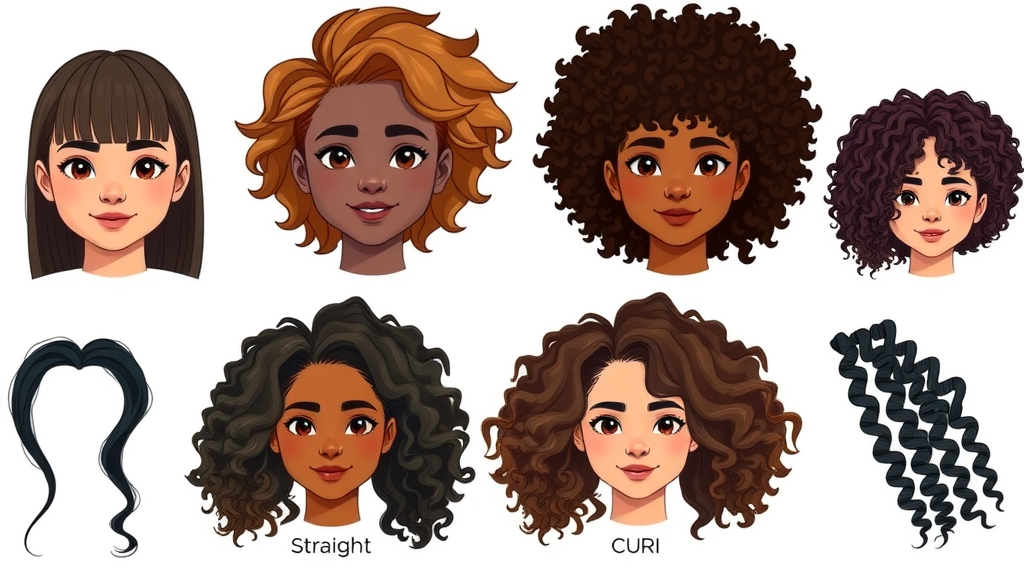
Knowing your hair type also helps prevent overuse of heat tools or heavy styling products that can lead to hair damage. Moreover, being aware of your hair’s needs lets you adapt your routine seasonally: for example, hydrated products in winter or anti-humidity solutions in summer.
Hair Type and Hair Care Tips: Tailoring Products and Routines
Tailoring your care routine begins with understanding which ingredients and methods complement your hair’s unique profile. For straight or fine hair, opt for gentle, volumizing shampoos and light conditioners that don’t weigh down the hair shaft. For curly or coily hair, prioritize hydrating hair masks, sulfate-free shampoos, and leave-in conditioners to maintain elasticity and reduce split ends.
Using the right hair care products supports hair grow and protects the scalp and hair. Avoid generic solutions and instead curate your regimen with your specific needs in mind. Pay attention to how your hair responds to new products or lifestyle changes, and adjust accordingly—whether that means more frequent deep conditioning treatments or increased protective styling to guard against hair loss and breakage.
The Ultimate Hair Care Routine: Expert Hair Care Tips for Healthy Hair
- Choosing the Right Shampoo and Hair Wash Frequency: Select a shampoo that matches your hair type and scalp needs. Those with oily roots may need to wash hair every other day, while dry, curly hair benefits from less frequent washing to preserve natural oils.
- Condition Properly for Hair Health: Always follow with conditioner, focusing on mid-lengths and ends. This step restores moisture, smooths the cuticle, and helps prevent split ends and hair damage.
- Seasonal Adjustments for Hair Healthy Results: Adjust your care routine as seasons change. Humid summer weather can increase frizz, requiring anti-humidity serums, while cold, dry winters call for extra moisture and nourishing oils.
- Incorporating Hair Masks and Deep Conditioning Treatments: Regular use of hair masks boosts hydration, repairs damage, and restores shine. Choose formulas that suit your hair type for maximum benefits.
- Protect Your Hair From Daily Damage: Use a heat protectant before styling, limit heat tool frequency, and be cautious when detangling wet hair. Gentle care preserves strong, healthy hair and prevents hair loss.
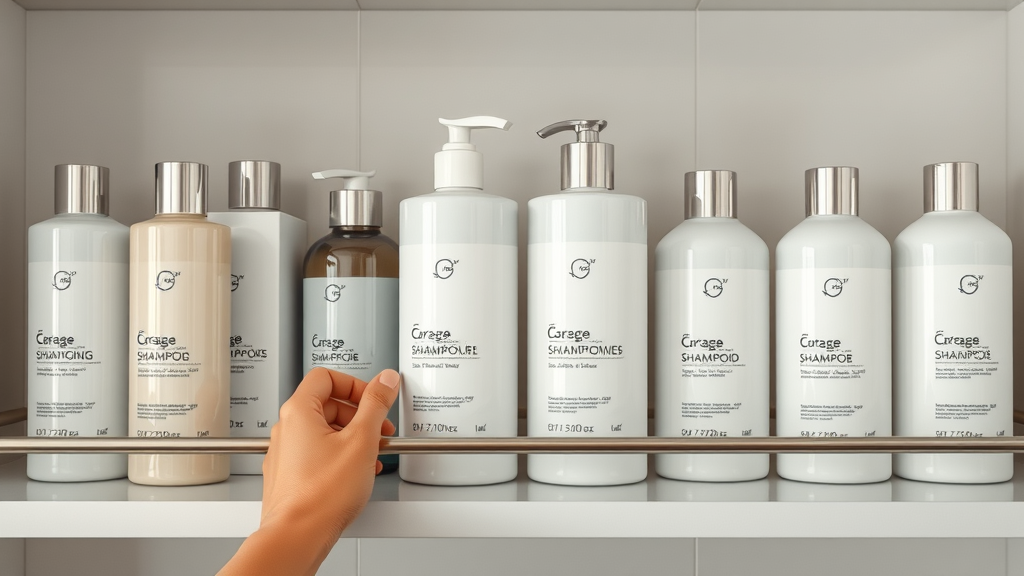
Sticking to these steps will help maintain a balanced scalp, boost your hair health dramatically, and deliver visible results over time. Consistency is key—following a thoughtful hair care routine protects your hair’s integrity and encourages hair growth from root to tip.
Everyday Hair Care Tips: Small Habits, Healthy Hair
- Use a heat protectant to guard against damage while styling
- Opt for air dry over frequent blow dry when possible
- Switch to a silk pillowcase to reduce split ends
- Minimize brushing when wet hair to avoid breakage
- Apply dry shampoo strategically between washes
| Product Type | Best For | Main Benefit | Recommended Usage |
|---|---|---|---|
| Volumizing Shampoo | Straight/Fine & Wavy Hair | Boosts fullness without build-up | 2-3x weekly |
| Moisturizing Conditioner | Curly & Coily Hair | Restores hydration; reduces frizz | Every wash |
| Protein Treatment | Damaged/Brittle Hair | Strengthens hair shaft; prevents breakage | Bi-weekly |
| Dry Shampoo | All Hair Types | Extends style; absorbs excess oil | Between washes |
| Leave-In Conditioner | Curly, Coily, and Dry Hair | Locks in moisture; eases detangling | As needed |
Hair Masks and Deep Conditioning Hair Care Tips for Superior Hair Health
Hair masks and deep conditioning treatments are vital for restoring dry, damaged, or chemically treated hair. Regular application replenishes moisture, reinforces the hair shaft, and prevents future breakage. Whether your focus is curly hair smoothness, frizz control, or repair for heat styling damage, there’s a formula designed just for you.
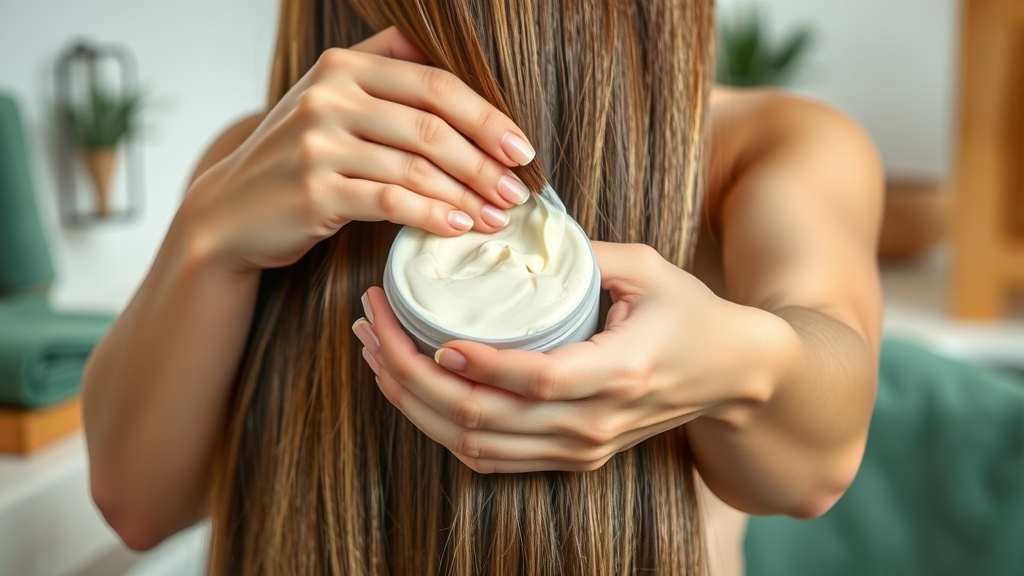
Top DIY and Store-Bought Hair Masks for Different Hair Types
You’ll find both DIY and store-bought options to suit every hair type. For dry or curly hair, try a coconut oil and honey mask for intense hydration and shine. Fine or oily hair types benefit from lightweight, protein-rich masks made with egg or yogurt. Commercial brands offer deep conditioning masks with keratin, argan oil, or shea butter to help protect your hair and provide instant smoothness and strength.
For intense repair, opt for a hair mask that specifically targets damage from heat styling or color processing. These masks usually contain amino acids, plant oils, or ceramides that rebuild the hair follicle and support long-term hair health. Incorporating hair masks into your care routine weekly can transform thy hair’s manageability and resilience.
How Often Should You Use a Hair Mask? Tips for Thy Hair and Healthy Hair
For most people, applying a hair mask once a week is ideal for maintaining healthy hair. If your hair is particularly parched, colored, or prone to breakage, consider deep conditioning treatments twice weekly. Be sure to follow the recommended leave-in times for your chosen product, and focus on applying masks from the mid-length to the ends, where hair damage and split ends occur most.
Muting the frequency or skipping entirely can lead to brittle, lackluster results—so listen to your hair's needs. Conversely, using heavy masks too often for fine hair can weigh down the hair shaft. Balance is key for optimal hair health.
Preventing Damage: Protective Hair Care Tips Against Hair Loss and Split Ends
Consistent preventative care is key to stopping hair loss , hair damage, and split ends before they start. Practicing gentle detangling, avoiding excessive heat styling, and minimizing chemical treatments create a foundation for lasting hair health .
Regular trims are essential to keep split ends at bay and maintain healthy hair growth. Additionally, treating your hair and scalp to soothing oils or lightweight serums, combined with protective hairstyling techniques, ensures a resilient hair shaft from root to tip.
Heat Styling: When to Blow Dry, Flat Iron, or Air Dry Your Hair
Deciding when to blow dry , flat iron, or air dry can profoundly affect your hair’s integrity. Whenever possible, allow hair to air dry naturally to limit exposure to extreme heat. If you must use heat, always apply a heat protectant spray and use the lowest effective temperature. For those who love sleek strands, choose ceramic or tourmaline flat irons to minimize split ends and hair damage.
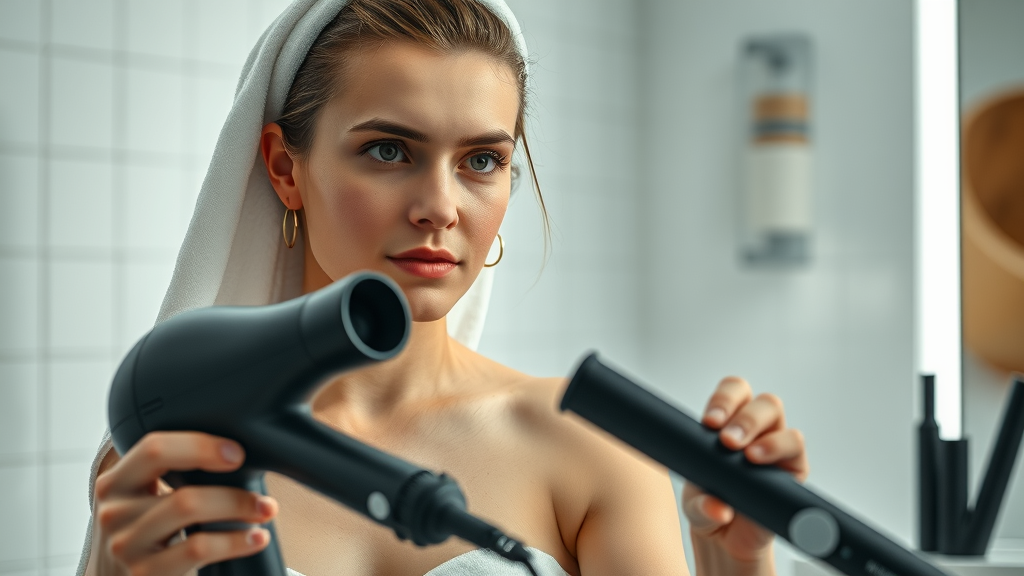
For curly or textured hair, diffuse drying with a blow dryer on low heat can enhance curls without causing frizz. Varying your drying and styling methods prevents repetitive, localized damage and keeps your hair healthy and vibrant.
Cutting Techniques and Trimming Split Ends for Hair Healthy Results
The best way to keep hair healthy and free of split ends is regular trimming—ideally every 8–12 weeks. Ask your stylist about dusting (removing only the very ends) for minimal length loss and optimal results. For curly hair, search out stylists who specialize in dry cutting or curly cuts, which preserve natural texture while trimming damage.
DIY trimming can be done at home if you’re comfortable and equipped with sharp shears. Gently section your hair and snip only what’s needed to avoid causing further hair damage. Consistent trimming helps sustain hair grow and supports healthy ends for all hair types.
Scalp Care: Essential Hair Care Tips for Improved Hair Health
A healthy scalp is the anchor for beautiful hair. Many neglect scalp care, but it’s vital for strong follicles, effective hair growth, and reducing hair loss or thinning. Massage gently with your fingertips or a specialized scalp massager to increase circulation and promote nutrient delivery to hair follicles.
Products like gentle scalp scrubs, exfoliating shampoos, and soothing botanical oils can banish buildup, encourage clarity, and relieve common scalp issues. Caring for your scalp prevents flaking, dandruff, and irritation—all contributors to hair damage and slow growth.
Promoting Scalp Health with Massage and Specialized Products
Regularly massaging your scalp improves scalp health by increasing blood flow, distributing natural oils, and energizing hair follicles for stronger, faster hair growth. You can boost this effect by using serums rich in biotin, caffeine, or peppermint oil. Specialized scalp brushes or silicone massagers offer gentle exfoliation, helping to remove dead skin and product build-up that inhibit healthy hair.
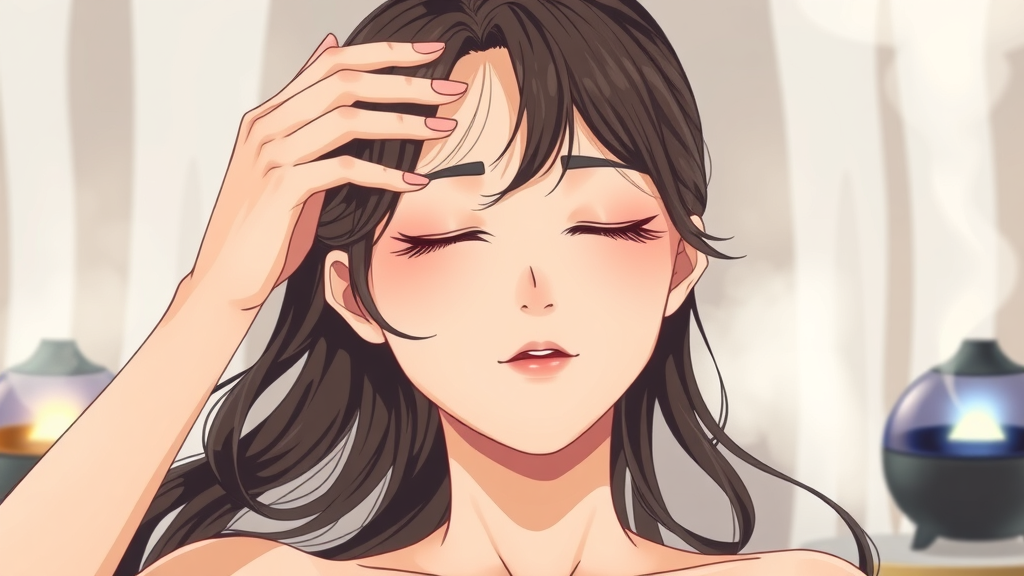
When combined with the right washing routine and leave-in treatments, scalp care can transform not just your hair’s look, but its actual structure—making hair appear fuller, shinier, and more resilient.
Recognizing and Treating Scalp Issues Affecting Hair Health
Some of the most common scalp concerns—flaking, itching, excess oil, or sores—can hinder hair growth and health. Early recognition and treatment are vital. Look for shampoos with zinc pyrithione for dandruff, tea tree oil for soothing, and salicylic acid for exfoliation. For persistent issues, consult a dermatologist for professional care.
Treating scalp issues quickly and routinely ensures your follicles stay unblocked, your scalp retains its natural oils, and your hair can grow without obstacles. Don’t underestimate how much a healthy scalp contributes to your hair care success.
Selecting the Best Hair Products: Expert-Recommended Hair Care Tips
- Key criteria for choosing shampoos, conditioners, and hair products
- Evaluating ingredients that support hair health
- Avoiding harmful chemicals detrimental to thy hair
| Do’s | Don’ts |
|---|---|
| Choose products for your hair type and needs | Over-shampoo or strip natural oils |
| Detangle gently, especially when wet hair | Brush harshly or with rough tools |
| Protect your hair from heat and UV | Use heat tools without heat protectant |
| Rotate hair care products for seasonal changes | Neglect scalp health |
| Schedule regular trims to prevent split ends | Ignore minor hair or scalp issues |
How Your Lifestyle Impacts Hair Health: Diet, Stress, and Daily Habit Hair Care Tips
- Superfoods for healthy hair: Avocados, nuts, salmon, berries, and leafy greens nourish follicles with essential fatty acids, vitamins, and antioxidants.
- Staying hydrated: Proper water intake helps maintain scalp’s moisture balance and encourages healthy hair grow.
- Managing stress: Chronic stress impacts hormone balance, which can slow hair growth, cause hair loss, or trigger scalp conditions. Practice stress-reducing habits for thy hair’s vitality.

Lifestyle choices—like balanced eating, fitness, reducing high heat from blow dry tools, and keeping a consistent sleep schedule—are deeply tied to hair and scalp health. Incorporating positive daily habits can be as important as product choices in achieving long-term transformation.
Troubleshooting Hair Concerns: Effective Hair Care Tips for Hair Loss, Frizz, and More
Even with a strong routine, challenges like hair loss, frizz, dryness, and breakage arise. Addressing them requires targeted solutions and ongoing attention to how your scalp and hair respond to changes in products, environment, or lifestyle.
Proactive troubleshooting—such as adapting your care routine during seasonal shifts, using anti-frizz serums, clarifying shampoos, or color-safe products—empowers you to react quickly and effectively for sustained hair healthy outcomes.
Addressing Hair Loss with the Right Hair Care Tips and Products
Hair loss can result from genetics, hormonal changes, poor nutrition, or harsh styling. Start by eliminating potential causes—avoid tight hairstyles, minimize chemical treatments, and reduce stress. Use strengthening shampoos, biotin-infused serums, and consult a dermatologist if shedding persists. Nutrient-rich, scalp-friendly products protect follicles, boost hair growth, and support stronger, fuller hair.
Supplements containing zinc, iron, and B vitamins may also assist, but should complement—not substitute—a holistic approach to overall hair health.
Controlling Frizz, Dryness, and Breakage for Hair Healthy Outcomes
Taming frizz and dryness relies on moisture retention. Use sulfate-free, hydrating shampoos and apply a leave-in conditioner after every hair wash. Avoid over-brushing and harsh towels; instead, gently pat wet hair dry with a microfiber towel. Anti-frizz serums or argan oil smooth cuticles and enhance shine.
Regular protein treatments also fortify the hair shaft, preventing breakage and helping to control split ends—especially in curly or color-treated hair. Keep a close eye on how your hair responds to climate changes, adjusting your routine with richer or lighter products as needed.
People Also Ask: What are 5 Tips for Healthy Hair?
- 1. Wash hair regularly but not excessively
- 2. Use a silk pillowcase to prevent split ends
- 3. Minimize heat styling and always apply heat protectant
- 4. Detangle gently when hair is wet
- 5. Nourish hair and scalp through diet and proper products
What is a Good Hair Care Routine?
A good hair care routine incorporates regular cleansing, proper conditioning, minimal heat styling, periodic hair masks, and scalp treatments, all customized for your hair type and unique needs.
What Are 3 Do's and Don'ts of Hair Care?
- Do: Use the right products for your hair type, detangle gently, protect hair from UV rays
- Don’t: Over-shampoo, brush harshly when wet, use excessive heat tools
How to Make Hair Healthy Again?
Restore hair health by minimizing damage from styling and coloring, incorporating strengthening products, trimming split ends, and nourishing thy hair from scalp to tip with a balanced diet and regular care.
Answers to Frequently Asked Questions About Hair Care Tips
- How often should I wash my hair for optimal hair health? For most, washing two to three times a week maintains clean, healthy hair. Adjust frequency based on your hair type and activity level, and avoid overwashing to retain natural oils.
- What’s the best hair mask for dry or curly hair? Rich, hydrating masks with ingredients like shea butter, coconut oil, or avocado deeply nourish curls and replenish moisture in dry hair. Use once or twice weekly for the best results.
- Does using a silk pillowcase really prevent split ends? Yes, silk pillowcases reduce friction while you sleep, which helps prevent split ends, hair breakage, and frizz—benefiting all hair types, especially fine or textured hair.
- Are there natural remedies for hair loss? Nutritional support with iron, zinc, and biotin; scalp massages with peppermint or rosemary oil; and minimizing stress can help slow or reverse hair loss. Results vary depending on the underlying cause.
- Which ingredients should I avoid in hair products? Steer clear of sulfates, parabens, phthalates, and alcohol in your hair care, as these can strip natural oils, weaken the hair shaft, and irritate the scalp.
Elevate Your Routine: Advanced Hair Care Tips for Healthy Hair Every Day
- Try scalp exfoliation for revitalized hair health
- Experiment with protective hairstyles and minimize tight styles
- Schedule quarterly assessments to review your hair goals
Key Strategies to Maintain Hair Health and Transform Hair Permanently
- Consistency in your personalized hair care routine
- Continual learning as products and needs change
- Listening to hair and scalp signals for ongoing adjustment
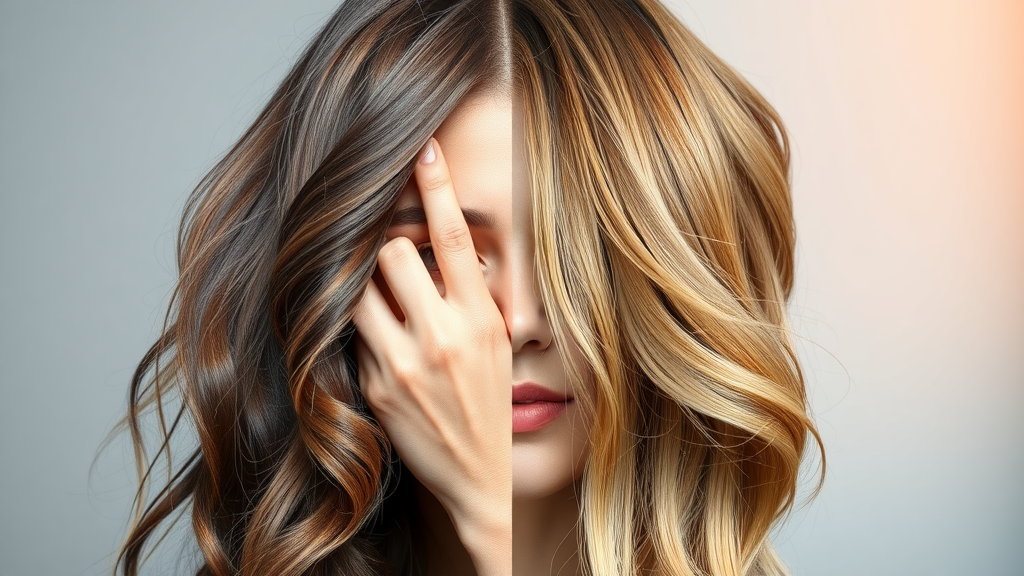
Unlock Confidence—Start Adopting Expert Hair Care Tips Today for Healthier, Happier Hair
Start your transformation now. Choose two new hair care tips from this guide and make them part of your routine. Your healthiest hair—and newfound confidence—await!
To further enhance your hair care routine, consider exploring these expert resources:
-
“Tips for Healthy Hair” : This guide from the American Academy of Dermatology offers professional advice on maintaining smooth, shiny hair, including recommendations on washing frequency, conditioning, and protecting hair from heat damage. ( aad.org )
-
“10 Hair Care Habits That Can Damage Your Hair” : Also from the American Academy of Dermatology, this article outlines common practices that may harm your hair and provides tips to prevent damage, such as proper shampooing techniques and the importance of gentle styling. ( aad.org )
Incorporating these insights into your daily regimen can help you achieve and maintain healthier, more vibrant hair.
 Add Row
Add Row  Add
Add 


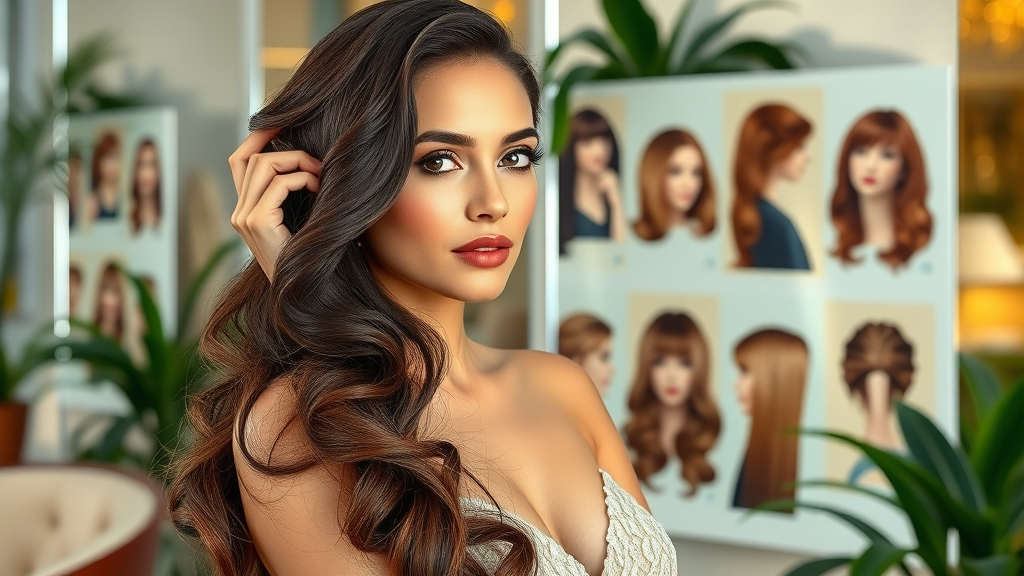

Write A Comment